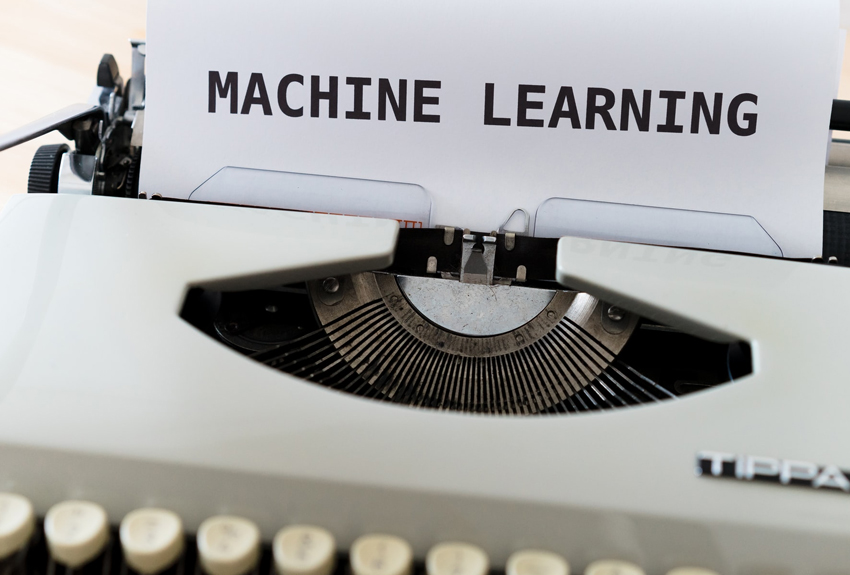
Machine learning is a branch of artificial intelligence that involves training systems to learn from data, identify patterns, and make decisions based on their experiences with minimal human intervention.
It’s an application of artificial intelligence that gives systems the ability to learn like humans, mimic human behaviors, and improve based on input data – without being explicitly programmed to do so. Machine learning algorithms predict outcomes using historical data input.
In the year 1959, Arthur Samuel coined the term Machine Learning. He was one of the authorities in Artificial Intelligence and computer gaming. He defined Machine Learning as: “Field of study that gives computers the capability to learn without being explicitly programmed.”
How Machine Learning Works
Machine learning works based on algorithms. Various algorithms are used to create machine learning models using training datasets. The type of algorithm used is determined by two things – the type of data and activity to be automated.
Machine Learning differs from traditional programming. At the training phase in machine learning, both input data and output are fed into the system to generate a program. On the flip side, traditional programming involves feeding computers with input data and a well-written program to generate output.
Types of Machine Learning
It’s classified based on how the algorithm learns from data to make more accurate predictions or decisions. That said, the four types of machine learning are:
- Supervised Learning
- Unsupervised Learning
- Semi-Supervised Learning
- Reinforcement Learning
Supervised Learning: In this machine learning approach, data scientists feed algorithms with labeled training data to learn and make accurate future predictions.
Unsupervised Learning: Unlike the supervised learning algorithm that makes predictions based on a labeled training dataset, unsupervised learning algorithms use training data that are not labeled.
Semi-supervised Learning: This approach involves both supervised and unsupervised learning. The algorithms can train using both labeled and unlabeled data.
Reinforcement Learning: This approach is similar to supervised learning. However, they differ in the way the algorithms are trained. The reinforcement learning model learns by using trial and error – not with sample data.
Applications of Machine Learning
Today, machine learning has become more important than ever. It’s applied in many fields to perform sophisticated tasks that only humans are capable of undertaking. It’s used to automate tasks, especially the ones that require human intelligence.
Making machines acquire human abilities is only possible through machine learning. Let’s take a look at some of its common applications.

#1 Recommendation Engines
Organizations use recommendation engines to study repeating patterns in customer behavior. This helps them to offer personalized experiences. For instance, Facebook uses machine learning to understand the content a user interacts with.
This insight enables Facebook to show the user their favorite type of content using reinforcement engines. When the user’s engagement patterns change, the Facebook algorithm detects the changes and adjusts accordingly.
#2 Speech Recognition
Speech recognition uses natural language processing (NLP) to capture and process human speech into a written form. Many devices like mobiles come with speech recognition capabilities – making voice search and other voice-to-text features possible.
#3 Email Spam Filtering
Machine learning algorithms in email software use preset rules to detect spam messages.
#4 Customer Service
kS7>zSv7BzBzA>7\. Chatbots can provide personalized advice and suggestions – like suggesting sizes for users.
#5 Human Resources Information Systems
HRIS program uses machine learning models to analyze and filter through job applications. The system categorizes applications and automatically shortlists potentially best candidates for the position.
#6 Computer Vision
Computer vision, powered by convolutional neural networks, is an AI technology. It provides systems with the ability to interpret visual inputs (like images and videos) and to take action based on the analysis. Among others, this technology is applied in imaging science in healthcare and photo tagging in social media.
#7 Customer Relationship Management
CRM software uses machine learning to analyze and categorize emails in order of importance. The tool notifies the sales team to reply to the most important emails first. Some systems can suggest potentially suitable responses.
#8 Automated Trading
Stock trading platforms leverage the power of machine learning to automate trading. Typically, a platform that uses automated trading can make thousands or millions of trades per day with minimal human intervention.
#9 Self-Driving Cars
Self-driving capabilities are built using computer vision AI technology. The ability to capture and analyze visual inputs enables self-driving cars to take action and avoid potential dangers. That’s the power of machine learning!
Wrapping Up
Machine learning technology has enhanced how organizations build products and drive business operations. Implementing machine learning within your company can improve your business processes and set the pace for delivering innovative products to the market. Let’s work together to make that happen!





